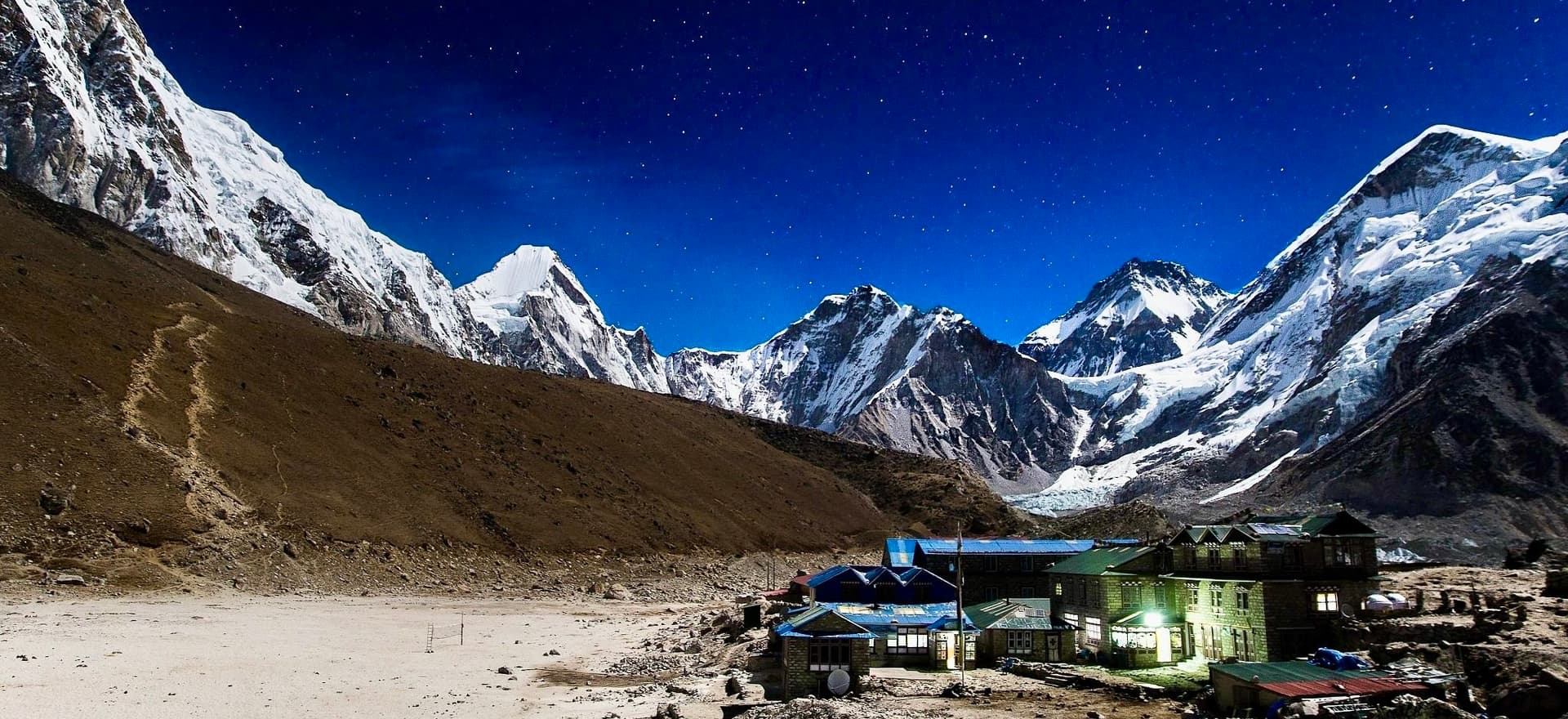The Everest Base Camp Trek is not just a journey to the base of the world's tallest mountain, but it's an adventure filled with captivating natural beauty, thrilling challenges, and intriguing cultural experiences. Starting from the lively city of Kathmandu to the tranquil heights of the Everest Base Camp, every step of the journey offers its unique charm.

This trek takes you through a variety of landscapes, from lush valleys and dense forests to glacial moraines and high mountain passes. Each day unfolds with unexpected highlights and attractions, making the journey as memorable as the destination itself. Whether it's the thrill of landing at the Lukla airport, the vibrant Sherpa cultures in Namche Bazaar, or the unworldly views of the mighty Himalayas, the Everest Base Camp Trek is an assortment of unique experiences.
In this blog, we're going to talk about some of the major highlights and attractions you'll encounter along the Everest Base Camp Trek. These highlights don't just make the trek rewarding, but they also give insights into the region's natural diversity and cultural richness. So, let's embark on this virtual journey and explore what awaits you on the Everest Base Camp Trek.
Starting Point: Kathmandu
The capital city of Nepal, Kathmandu, marks the beginning of your Everest Base Camp Trek. It's a city where the old collides with the new, and modern buildings stand side-by-side with ancient temples and structures. You will have the opportunity to explore its bustling streets, sample local cuisine, and visit some of the city's many UNESCO World Heritage Sites.

One such site is the Kathmandu Durbar Square, a historical royal site where kings were once crowned and legitimized. The site is a marvel of Newar architecture. The wooden carvings of gods, goddesses, monsters, and other mythical beings, each more intricate than the last, are simply awe-inspiring.
Next, you can visit the Swayambhunath Stupa, also known as the Monkey Temple, perched on top of a hill overlooking the city. The Buddhist temple is known for the large, serene eyes of the Buddha that stare out across the valley. A climb up its 365-step staircase will reward you with panoramic views of the city below.
The Pashupatinath Temple, the holiest Hindu temple in Nepal, is also worth a visit. It's a sprawling complex of temples, ashrams, images, and inscriptions that has been a significant pilgrimage site for centuries.
Last but not least, explore Boudhanath Stupa, one of the largest spherical stupas in Nepal. It's the center of Tibetan Buddhism in Nepal and is rich in symbolic significance. The influx of large populations of Tibetan refugees from China has seen the construction of over 50 Tibetan Gompas (Monasteries) around Boudhanath.
Remember, all these sites offer a glimpse into Nepal's rich historical and cultural heritage, setting the stage for the extraordinary journey that awaits you on the Everest Base Camp Trek.
Flight to Lukla
One of the first and most exhilarating highlights of the Everest Base Camp Trek is the flight to Lukla. The Tenzing-Hillary Airport in Lukla is known as the most dangerous airport in the world, but don't let that deter you! With highly experienced pilots at the helm, you'll be safe and secure on your short but thrilling flight from Kathmandu.
During the 40-minute flight, you'll be treated to breathtaking views of the Himalayan range as you fly between mountains and over landscapes that gradually change from the greenery of the lower altitudes to the snow-capped peaks of the higher ranges.

The flight itself is a thrilling adventure, with the small plane navigating through narrow mountain passes before making a steep landing on the short, sloping runway of Lukla airport. It's an experience that adds a touch of excitement and adrenaline to the start of your trek.
Once in Lukla, situated at 2,860 meters above sea level, you'll start to feel the chill of the mountains. The town is home to a number of guesthouses and lodges where you can rest and acclimatize before officially starting the trek to Everest Base Camp. It's a small and vibrant town, with stone streets, bakeries, equipment shops, and even internet cafes.
Remember, this adventurous flight is an essential part of the Everest Base Camp Trek experience and serves as a fitting introduction to the thrilling journey that awaits.
Sherpa Culture in Namche Bazaar
Namche Bazaar is one of the most well-known stops on the Everest Base Camp Trek. Nestled in the mountains at an altitude of 3,440 meters, this bustling town is the economic hub of the Khumbu region and a central meeting point for local Sherpa communities.
The first sight of the terraced village, as you round a bend in the trail, is truly breathtaking, with its colorful houses and lodges spread out against the stark backdrop of the towering snow-capped peaks. Namche is also the first place on the trek where you'll get a glimpse of Mount Everest in the distance, a rewarding view after a steep and challenging ascent.
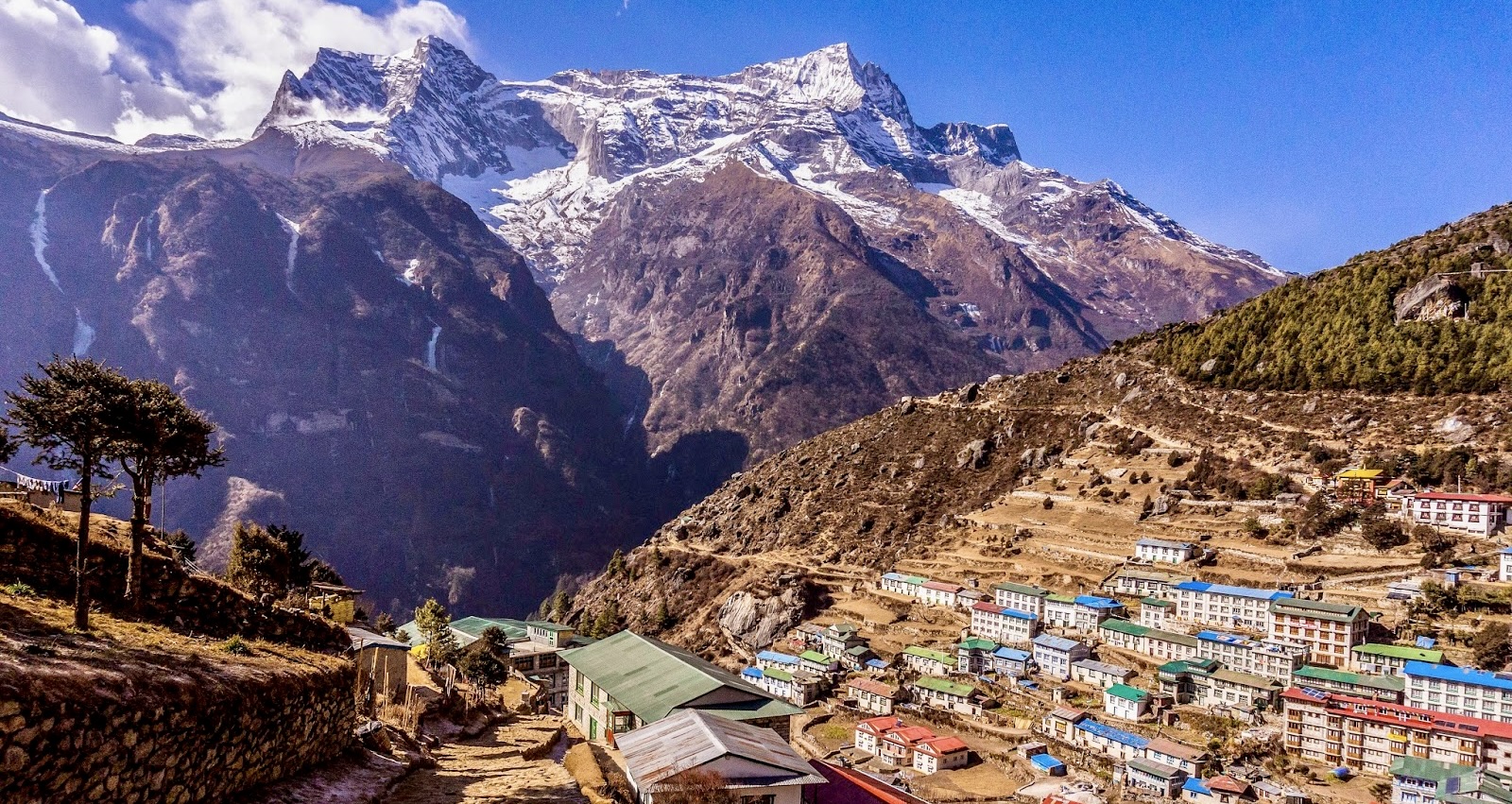
In Namche Bazaar, you'll have the opportunity to immerse yourself in the rich Sherpa culture. Sherpas are an ethnic group from the most mountainous region of Nepal, high in the Himalayas. They are known for their mountaineering skills and are often hired as guides for expeditions. Visit the local museum to learn more about their culture, history, and their deep connections with the mountains.
Every Saturday, the town comes alive with a weekly market where traders from surrounding villages come to sell food, clothes, and trekking equipment. It's an excellent opportunity to interact with the locals and perhaps pick up some supplies or souvenirs.
Moreover, Namche Bazaar is an acclimatization stop. It's recommended to spend at least two nights here to adjust to the altitude. During your acclimatization day, you can explore the surrounding area, visit the famous Everest View Hotel, or hike up to the Sagarmatha National Park's visitor center, where you can enjoy panoramic views of Everest, Lhotse, and Ama Dablam.
Overall, Namche Bazaar provides trekkers with a unique and authentic glimpse into the Sherpa lifestyle and an opportunity to engage with the people who call this high-altitude region their home.
Sagarmatha National Park
Sagarmatha National Park, a UNESCO World Heritage Site, is another must-see highlight along the Everest Base Camp Trek. The park, which is named after the Nepalese term for Mount Everest, spans a stunning 1,148 square kilometers of the Solu-Khumbu district.
From lush forests and alpine vegetation to glacial peaks and rugged terrain, the diverse landscapes of Sagarmatha National Park offer a glimpse into the natural beauty of the Himalayan region. As you trek through the park, you'll come across a rich biodiversity including over 118 species of birds and a number of rare mammal species like the snow leopard, red panda, and musk deer.

Sagarmatha National Park also holds significant cultural value. Throughout the trek, you'll encounter monasteries, chortens, mani walls, and prayer flags, which are a testament to the deeply rooted Buddhist traditions in the region. One notable site is the Tengboche Monastery, the largest monastery in the region, known for its stunning panoramic views of Everest and Ama Dablam.
As part of the trek, you'll need to obtain a permit to enter the park. This can be done in Kathmandu or upon arrival at the park's entrance in Monjo.
The journey through Sagarmatha National Park is a challenging yet rewarding experience, bringing you face-to-face with the majestic beauty of the Himalayas and the rich culture of the Sherpa community. It's an adventure that leaves a lasting impression on all those who undertake it.
Tengboche Monastery
Tengboche Monastery, also known as Dawa Choling Gompa, is another significant highlight of the Everest Base Camp Trek. Situated at an altitude of 3,867 meters, it is the largest monastery in the Khumbu region and a spiritual center for the Sherpa people.
The trek to Tengboche is particularly spectacular. As you follow the trail along the Dudh Koshi river and up a steep climb through a forest of pine, fir, and rhododendron, you'll be rewarded with breathtaking views of the Himalayan giants like Everest, Nuptse, Lhotse, Ama Dablam, and Thamserku.
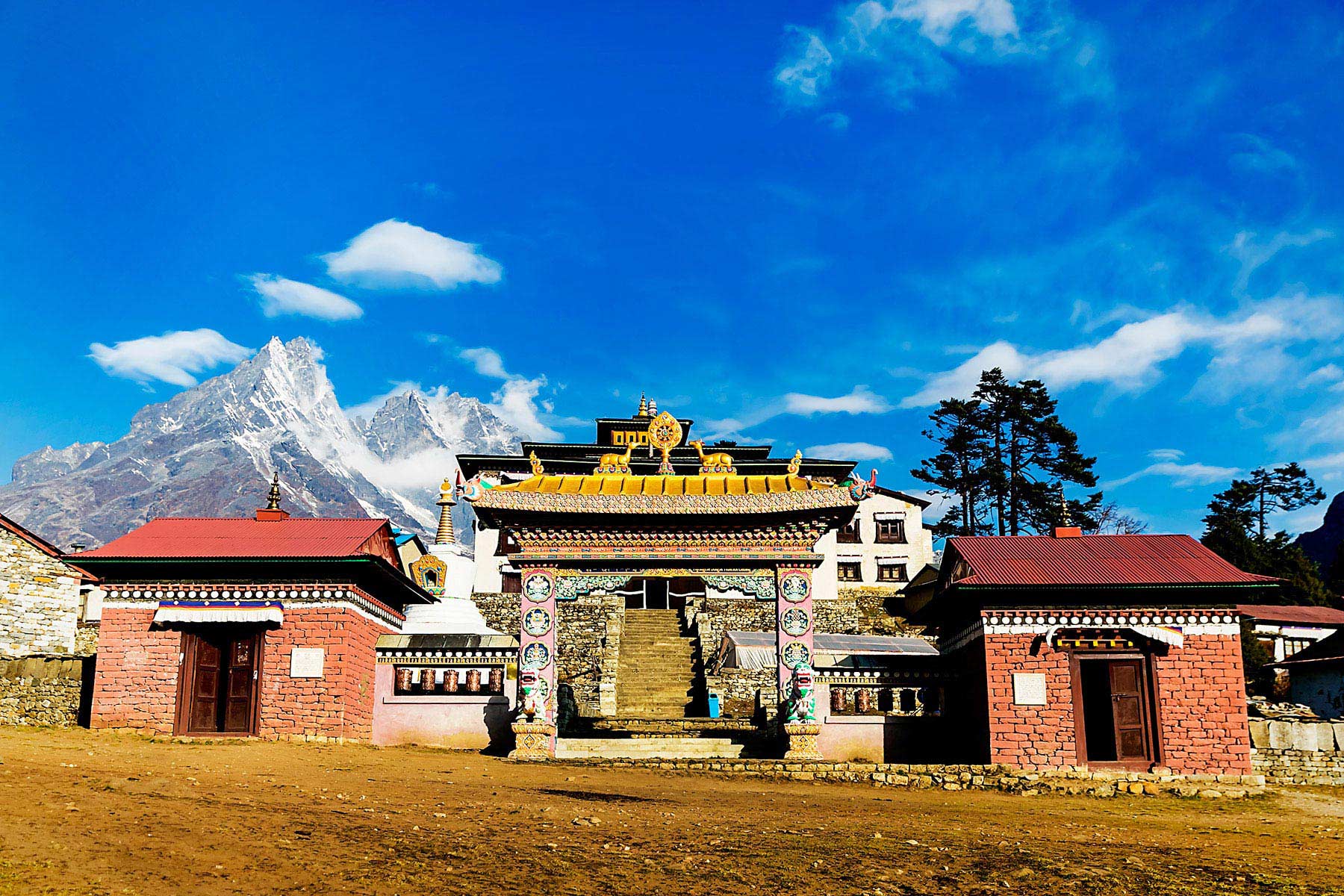
The monastery itself, surrounded by stunning mountain scenery, is a remarkable sight. Its richly decorated prayer hall is a place of tranquility, filled with murals and thangkas (Tibetan Buddhist paintings). The main attraction is a 20-foot statue of Buddha. It's a spiritual sanctuary in the heart of the Himalayas where trekkers often go to pray for a successful trek.
Moreover, Tengboche Monastery is known for the Mani Rimdu festival, a colorful annual celebration that takes place usually in October or November. The festival, which features traditional Sherpa dances, rituals, and masked performances, is a unique cultural experience that offers deep insights into Sherpa spirituality and customs.
Spending a night at Tengboche not only allows you to explore the monastery but also to witness one of the most spectacular sunsets over Everest and Ama Dablam. It's a moment of pure magic that epitomizes the awe-inspiring beauty of the Himalayas.
Incredible Mountain Views
The most memorable highlight of the Everest Base Camp Trek is, undoubtedly, the stunning mountain vistas. As you trek deeper into the Khumbu region, you are surrounded by some of the highest and most awe-inspiring peaks in the world.
The journey provides unparalleled views of majestic Himalayan giants, including Mount Everest, the world's highest peak at 8,848 meters. But it's not just about Everest. The trek introduces you to a series of mesmerizing peaks such as Lhotse, Nuptse, Pumori, Changtse, Ama Dablam, and Thamserku, each unique in its shape and character.
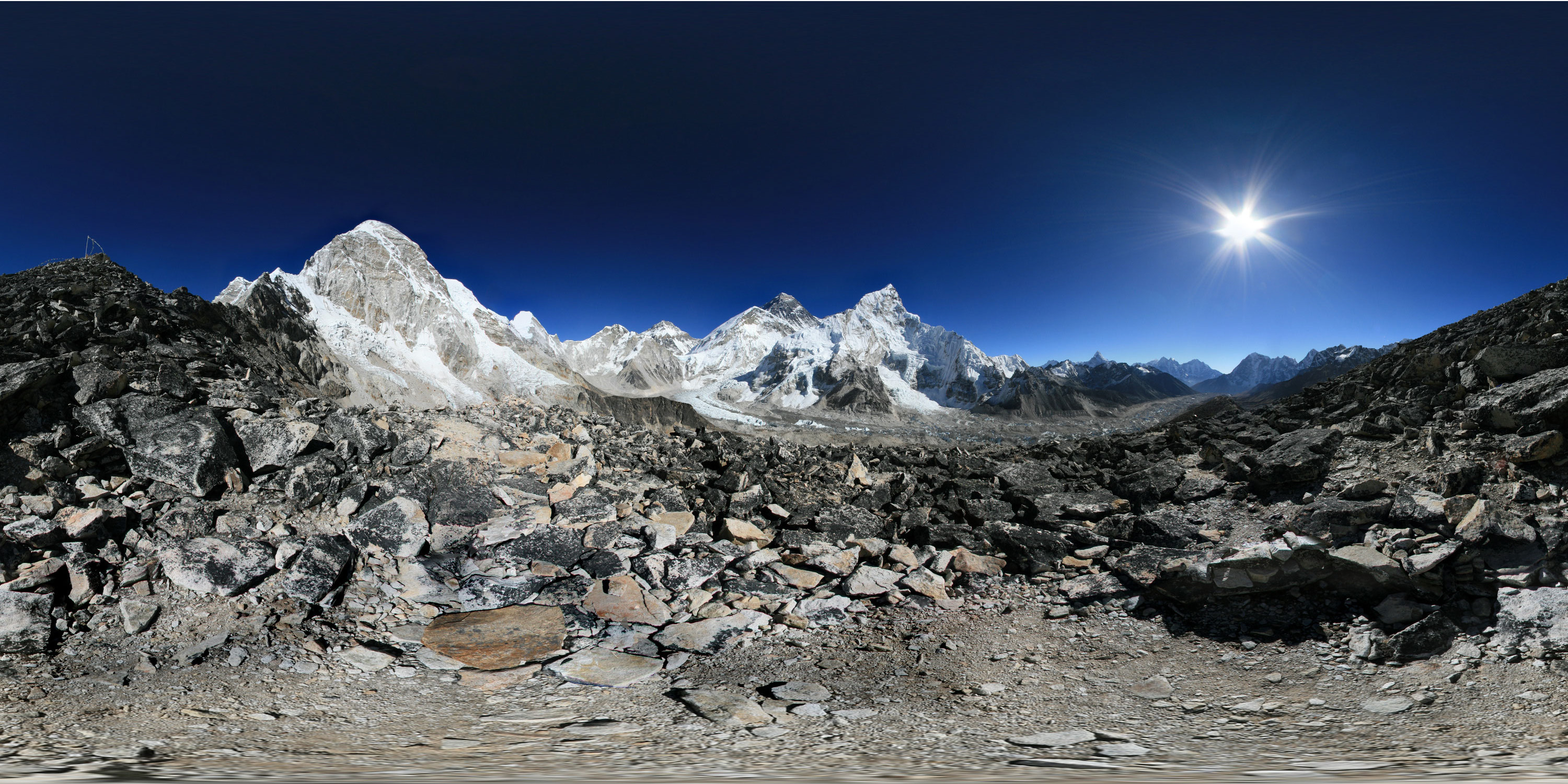
One of the key vantage points along the trek is from Kala Patthar. At an elevation of 5,545 meters, it is the highest point most trekkers reach without mountaineering equipment. From here, you get a panoramic view of the whole Everest massif, with an unobstructed sight of Everest's windblown summit. The sunrise or sunset view from Kala Patthar, with the first or last light hitting Everest, is an experience beyond words.
Additionally, throughout the trek, you'll be walking through terrains that constantly change - from verdant forests, rushing rivers, and glacial moraines to high-altitude alpine ecosystems. These ever-changing landscapes add to the visual feast that is the Everest Base Camp Trek.
So, don't forget to pack a good camera because the photographic opportunities are endless, and the views are the kind that stay with you long after the trek is over.
Everest Base Camp
Reaching the Everest Base Camp itself is undoubtedly the major highlight of the entire trek. Situated at an elevation of 5,364 meters (17,598 ft), the base camp is not just a point on a map, but it symbolizes a dream for many adventurers across the globe.
The euphoria of standing at the foot of Mount Everest, the highest peak in the world, is an unparalleled feeling. Although you won't see the summit from the base camp due to the Khumbu Icefall blocking the view, you'll be standing on a historic spot that has been the launching point for many renowned mountaineers on their successful Everest expeditions.
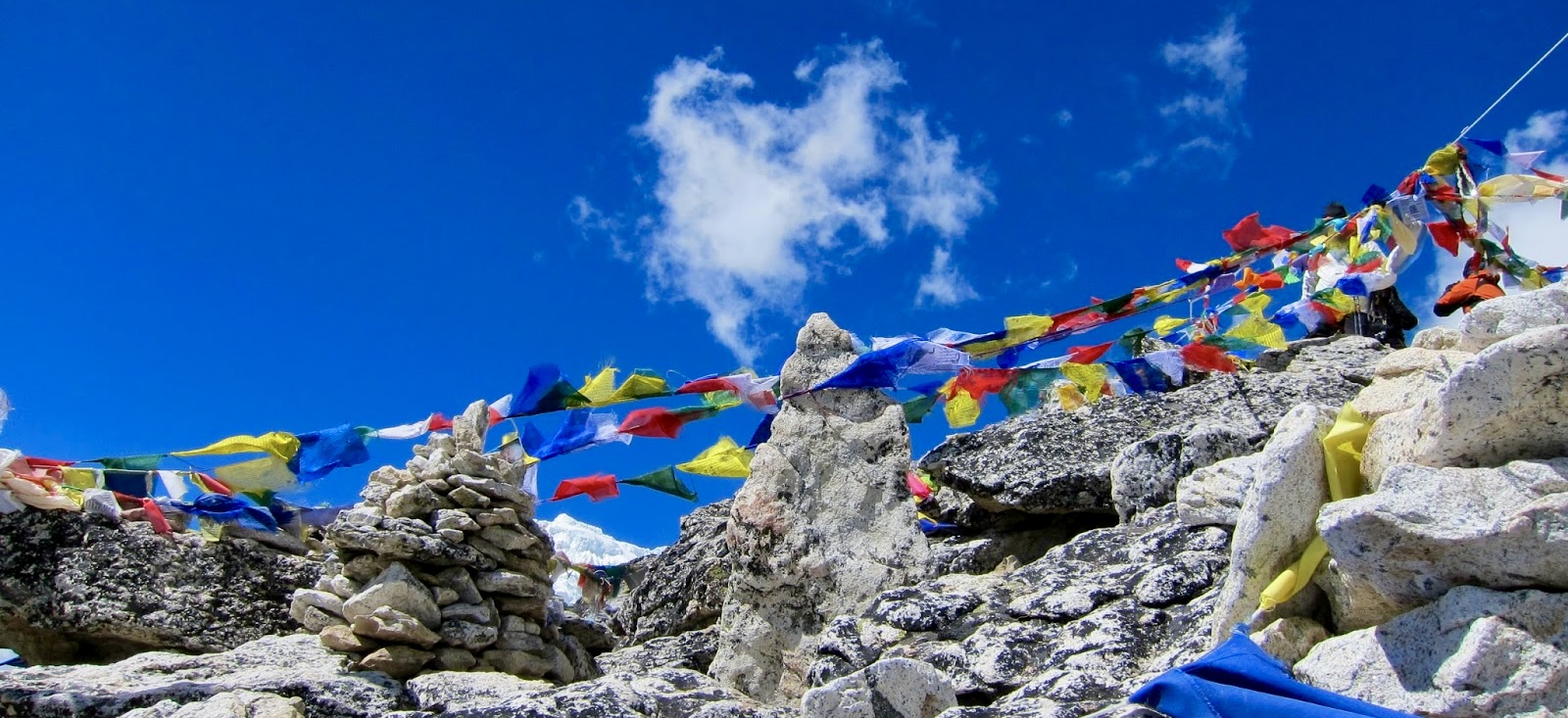
The base camp is set on a moving glacier, and you'll see tents of various expeditions (mainly in spring) scattered around. A rock bearing the inscription 'Everest Base Camp' and the elevation indicates the location of the base camp. The panoramic view of the Khumbu Icefall and the surrounding mountains is astounding.
One fascinating aspect of visiting the Everest Base Camp is the opportunity to see the dynamics of an expedition camp. The camp is bustling with activity during the climbing seasons, as climbers prepare for their summit attempts. However, do remember that the actual tents of climbers are off-limits to trekkers to maintain the sanctity of the climbers' space.
The base camp area is a testament to the power of human endurance and determination. It's a place where you truly feel the grandeur of the mountains and appreciate the efforts of those who dare to scale its towering heights. Being at the base camp gives you a sense of achievement and a story to tell, a story of how you traced the footsteps of legendary mountaineers to the base of the world's highest peak.
Khumbu Icefall
The Khumbu Icefall, located at the head of the Khumbu Glacier just above the Everest Base Camp on the Nepali slopes of Mount Everest, is one of the most dangerous stages of the South Col route to the Everest summit. The Icefall is renowned for its surreal beauty, but it is also one of the most perilous sections of the climb due to constantly shifting ice, deep crevasses, and towering seracs (large blocks or columns of glacial ice).
Named for the glacier that it originates from, the Khumbu Icefall is the gateway to the high Himalayas. With massive ice towers, some over 100 feet high, and deep, yawning crevasses that can open up without warning, it poses immense challenges to climbers. The fast movement of the Khumbu Glacier, up to a meter per day, adds to the risk and unpredictability of navigating the icefall.
The crossing of the Khumbu Icefall is usually undertaken in the very early morning hours before the sun's heat can increase the chances of ice or seracs collapsing. Ladders and ropes are fixed by a team of 'Icefall Doctors', highly experienced Sherpas who maintain and fix the route through the icefall throughout the climbing season. Their role is crucial and highly respected in ensuring the relative safety of the climbers who pass through.
Despite its inherent dangers, the Khumbu Icefall draws climbers from around the world for its intense challenge and the stunning, raw beauty of the ice formations. However, for those trekking to the Everest Base Camp, it serves as a magnificent backdrop, a testament to the enormous power and allure of nature, and the audacious human spirit that dares to venture through it.
Hospitality of Local People
One of the memorable highlights and attractions along the Everest Base Camp Trek is undoubtedly the warm and generous hospitality of the local people, mainly the Sherpas. Sherpas are a Tibetan ethnic group native to the most mountainous regions of Nepal and the Himalayas, and they are renowned worldwide for their mountaineering skills and their intrinsic knowledge of the high altitudes. But it's their kindness and open-hearted welcome that leaves a lasting impression on visitors.

From Kathmandu to Lukla, and all the way up to the remote high-altitude villages on the trail, trekkers will meet and interact with local Sherpas and other ethnic groups. Stopping at teahouses run by local families, sharing meals and stories, and learning about their culture, traditions, and the challenges of life in these harsh yet beautiful surroundings creates an invaluable cultural exchange.
Local people are often more than happy to share tales of their life in the mountains, local folklore, and the many climbing expeditions they've seen pass through their lands. Their warm smiles, genuine hospitality, and their resilience in the face of daily hardships leave an indelible mark on the hearts of those who pass through their villages.
The tea houses that provide accommodation along the route are run by Sherpa families who provide home-cooked meals and a warm place to rest. These tea houses are the heart of Sherpa community life and offer a fascinating glimpse into local customs and rituals.
In a land that is often harsh and inhospitable, the warm, welcoming nature of the Sherpas and other local communities stands as a testament to the enduring human spirit. Their hospitality is an integral part of the Everest Base Camp Trek experience, adding a rich, human dimension to the awe-inspiring natural beauty of the mountains.
Experience a Helicopter Flight Above the Himalayas
One of the most breathtaking and exhilarating experiences you can have during your Everest Base Camp Trek is taking a helicopter flight above the Himalayas. This is not a standard part of the trek and is usually an optional extra, but for those who choose this experience, it can be a highlight of their trip.
The helicopter flight typically starts from Lukla, flying over the Khumbu Valley and past the spectacular mountains, glaciers, and deep valleys. You'll get a bird's eye view of the entire Everest region, a perspective that's very different from the ground-level view you get while trekking.
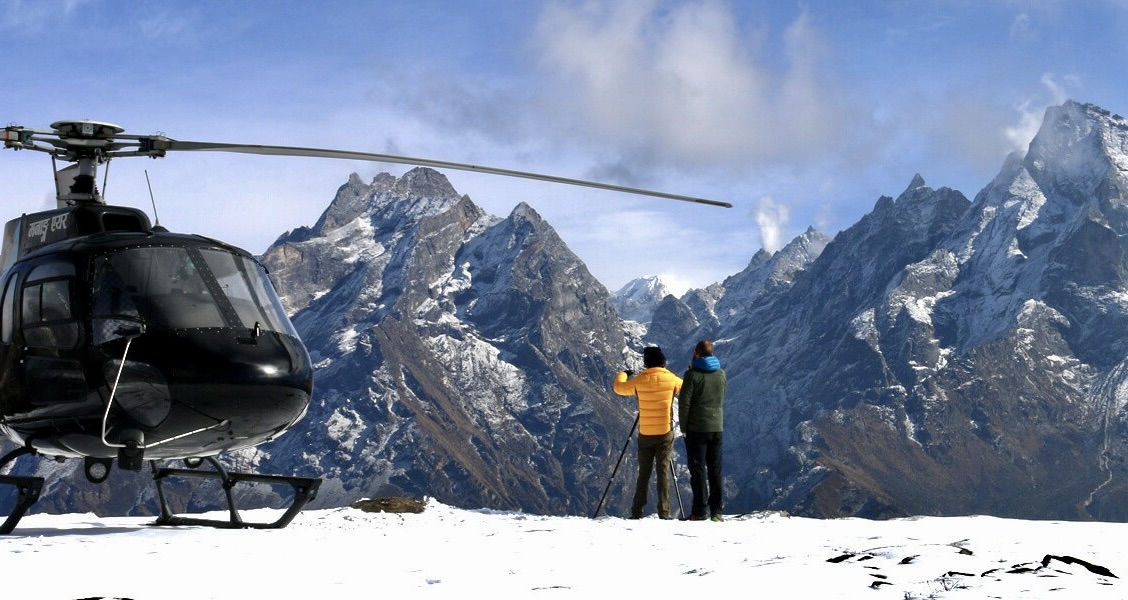
You'll fly past iconic peaks such as Ama Dablam, Thamserku, Kantega, Lhotse, Nuptse, and of course, Mount Everest. If you choose, you can also land at Kala Patthar for an even closer view of Everest and the Khumbu Icefall.
A helicopter flight gives you a unique opportunity to see the vastness and majesty of the Himalayas in a way that very few get to experience. It's an unforgettable experience, a once-in-a-lifetime chance to see the world's highest mountains from a perspective usually reserved for the birds.
The helicopter experience is not included in the standard Everest Base Camp Trek package and needs to be booked separately. It's a good idea to check with your tour operator about the options, costs, and safety measures.
Remember, you'll be flying at high altitudes, and weather conditions can change quickly in the mountains. Your safety is the highest priority, so all flights are subject to weather conditions. The pilots are highly experienced and will only fly if it's safe to do so.
In conclusion, a helicopter flight above the Himalayas can be a thrilling addition to your Everest Base Camp Trek, offering unparalleled views and a unique experience that you'll remember for a lifetime.
Tenzing Hillary Airport, Lukla
Tenzing-Hillary Airport, also known as Lukla Airport, is often the first major highlight of the Everest Base Camp trek. Named after Sir Edmund Hillary and Tenzing Norgay, the first individuals confirmed to have reached the summit of Mount Everest, the airport serves as the main gateway to the Khumbu and Everest region.
The thrilling flight from Kathmandu to Lukla is considered one of the most exhilarating in the world due to the airport's unique location perched on a mountainside 2,860 meters above sea level, and its incredibly short runway that is just 527 meters long and inclined at 12% gradient.
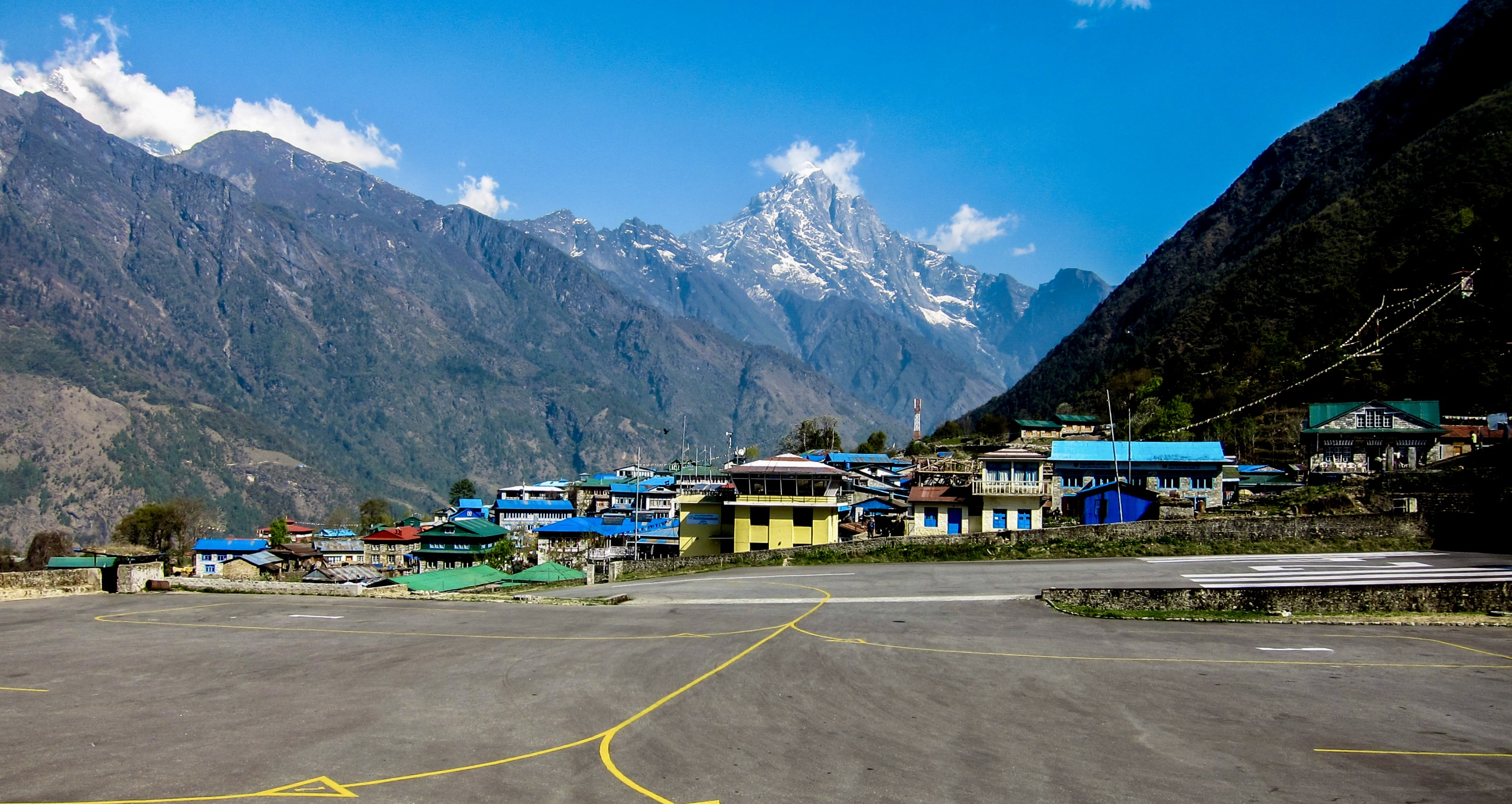
Lukla Airport is often described as the most dangerous airport in the world due to its challenging topography and the rapidly changing weather conditions in the region. Despite this, experienced pilots navigate these conditions expertly, making the journey a safe one for the thousands of adventurers who pass through each year.
Once in Lukla, trekkers typically spend a day acclimatizing before beginning their trek towards Everest Base Camp. The small town offers a variety of accommodations and services, as well as spectacular views of the surrounding mountains, making it a fascinating starting point for the trek.
Overall, the flight to Lukla and the Tenzing-Hillary Airport is an experience not to be missed, giving trekkers their first real taste of the adventure that lies ahead on their journey to Everest Base Camp.
Kala Patthar
Kala Patthar, which translates to "black rock" in Nepali, is another key highlight of the Everest Base Camp trek. Situated at an altitude of 5,643 meters, it's widely considered the best vantage point for an unobstructed view of Mount Everest's summit. This small peak offers panoramic views of the entire Everest massif, and many trekkers claim that the sunrise or sunset view from Kala Patthar is one of the most breathtaking experiences of their lives.
Trekking up to Kala Patthar is a strenuous climb due to the high altitude, but the reward of standing face-to-face with the highest point on Earth is a memory that lasts a lifetime. Along with Everest, other notable peaks visible from Kala Patthar include Nuptse, Changtse, Lhotse, and Pumori. The perspective and proximity to these towering mountains from Kala Patthar is an experience that cannot be replicated anywhere else in the world.
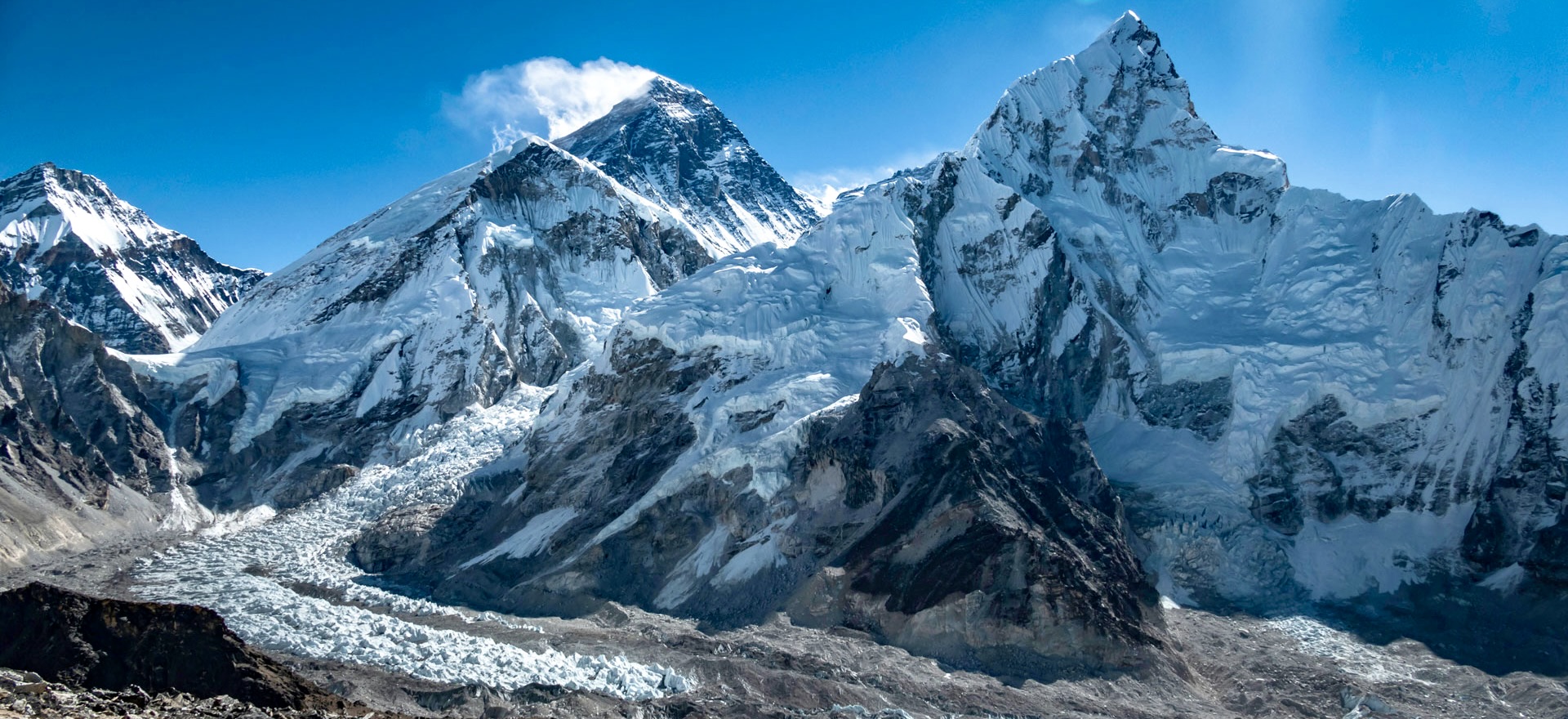
In addition to its stunning views, Kala Patthar also offers a sense of achievement to those who make the trek to its peak. It represents the highest altitude many trekkers will reach during their Everest Base Camp journey, making the moment of reaching Kala Patthar's peak a truly unforgettable highlight of the trek.
So, while Everest Base Camp is the goal for many, the journey to Kala Patthar is often the scenic highlight of the trek, offering a viewpoint that brings you closer to Everest than the base camp itself.
Hotel Everest View
The Hotel Everest View, situated within Sagarmatha National Park, is another highlight of the Everest Base Camp Trek that should not be missed. At a height of 3,962m above sea level, it holds the Guinness World Record for the highest-placed hotel in the world.
The Hotel Everest View is conveniently located above Namche Bazaar, the Sherpa capital and the hub of the Khumbu region. It's about an hour's walk from the town center, and it's on the Everest Base Camp Trek route. The hotel is typically visited during an acclimatization day in Namche Bazaar.
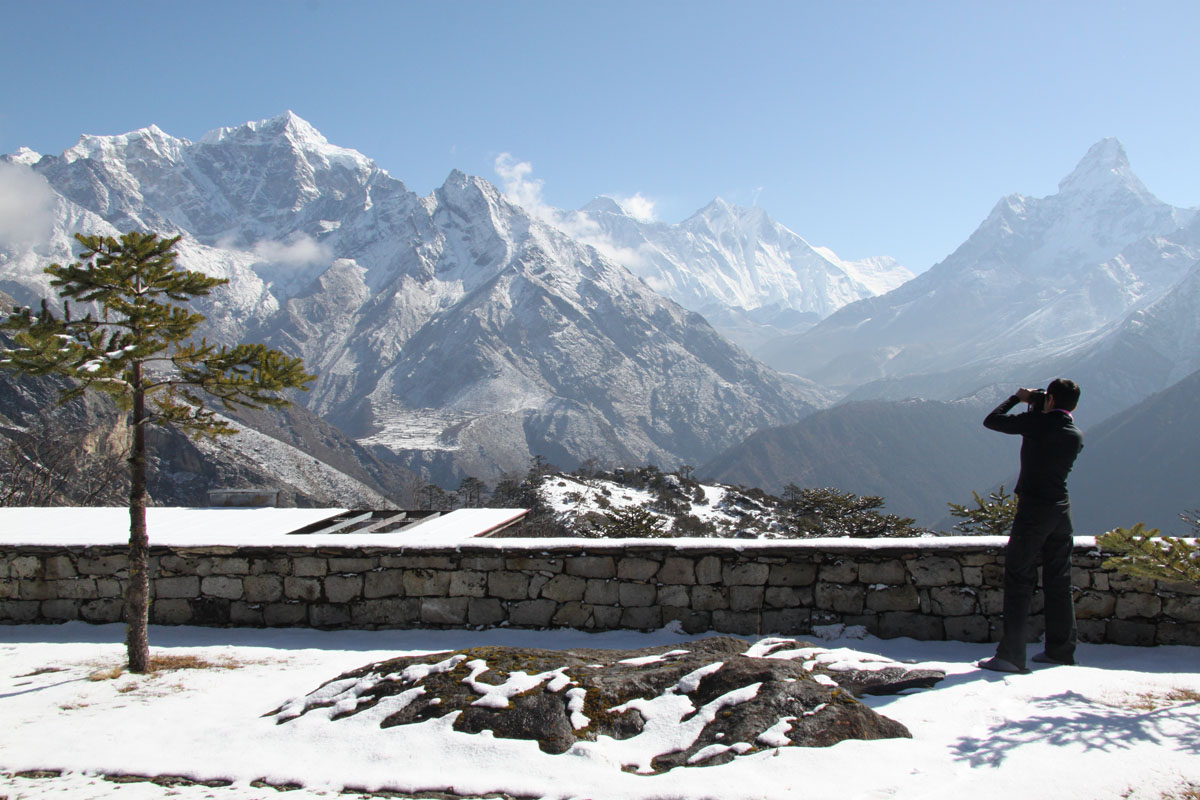
The hotel offers comfortable rooms with en-suite bathrooms and each room provides a panoramic view of Everest and other stunning Himalayan peaks right from the windows. But the real highlight of the Hotel Everest View is its terrace. Here, you can enjoy a hot drink while soaking up the incredible panoramic views of the Himalayas, including Mt. Everest, Ama Dablam, Thamserku, Lhotse, and others.
Despite the remote location, the hotel provides a high standard of comfort to its guests. With its solar heating and an environmentally sensitive waste disposal system, it has also been built and maintained with a strong emphasis on sustainability. This balance of luxury and eco-friendly consciousness in the heart of the Himalayas makes a visit to the Hotel Everest View a memorable experience.
Whether you’re staying overnight or just stopping by for lunch or a tea break, the Hotel Everest View is a highlight that offers an exclusive view of Everest and the surrounding peaks like no other place on the trek.
Luxury Lodge Experience
Another significant attraction along the Everest Base Camp Trek is the opportunity to experience the luxury lodges that are sprinkled throughout the region. The trek can be physically challenging, but that doesn't mean you have to compromise on comfort. The luxury lodges along the route offer a delightful blend of traditional Sherpa hospitality and modern comforts, turning your trek into an incredibly comfortable adventure.
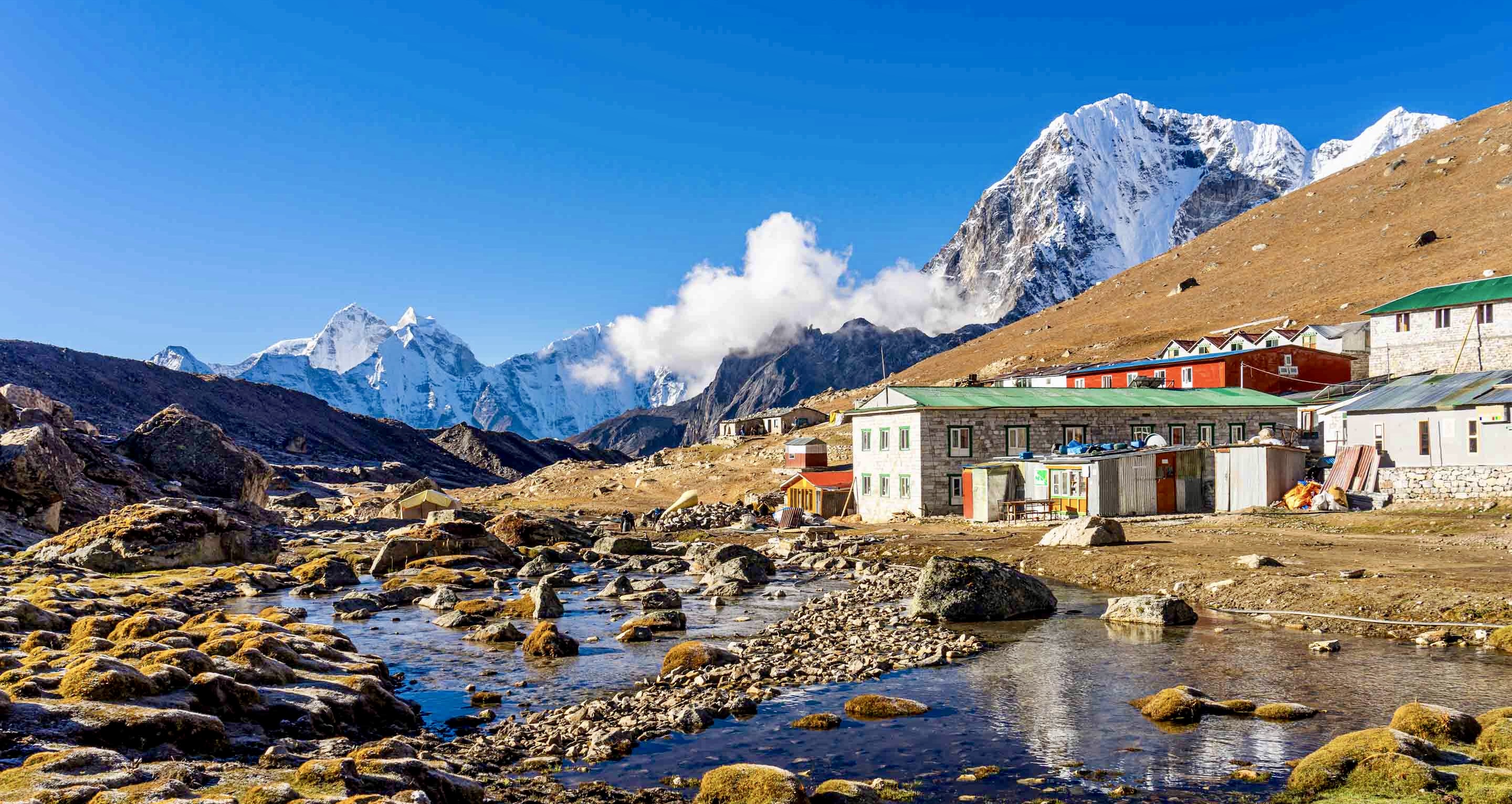
From beautifully crafted rooms with en-suite bathrooms and heated blankets to dining halls serving delectable local and international cuisines, the luxury lodges on the EBC trek ensure your rest times are as enjoyable as the trek itself. Some of these lodges even offer additional amenities like massage services, libraries, hot showers, and Wi-Fi connectivity.
Staying in these lodges also allows trekkers to experience the warmth and hospitality of the local Sherpa community. The staff in these lodges are mostly locals, and they bring a touch of Sherpa culture and tradition to the service. You'll also get to try local dishes, hear local music, and learn more about Sherpa traditions and customs.
Locations like the Yeti Mountain Home in Lukla and Namche, the Rivendell Lodge in Deboche, and the Himalayan Culture Home in Pangboche are some of the famous luxury lodges en route. The panoramic views of the mountain range from these lodges are a sight to behold.
In conclusion, the luxury lodge experience is a highlight that sets the Everest Base Camp trek apart. It lets you soak in the majestic beauty of the Himalayas while being enveloped in comfort and warm hospitality, making your trekking experience truly unforgettable. Be sure to check with your tour operator about incorporating stays at these lodges into your trekking itinerary.
The Everest Base Camp Trek is a journey that encapsulates the breathtaking allure of the Himalayas. From the buzzing streets of Kathmandu to the exhilarating flight into Lukla, and from the rich Sherpa culture of Namche Bazaar to the tranquil spiritual atmosphere of the Tengboche Monastery, each moment of this trek offers something new and exciting.
Walking on the trails adorned by majestic mountain peaks and witnessing the world from the vantage point of Kala Patthar is nothing short of transformative. The challenge of reaching the base of the world's highest peak, Mount Everest, brings with it a sense of achievement and admiration for the indomitable spirit of the mountaineers who have scaled its heights.
This trek is more than just a journey; it is an exploration of the magnificent landscapes, vibrant culture, and captivating tales of bravery associated with Everest. The hospitality of local people, the awe-inspiring Khumbu Icefall, and the memorable moments spent in the comfort of luxury lodges, all add to the rich tapestry of experiences that make the Everest Base Camp Trek a coveted journey for adventure enthusiasts across the globe.
While the trek can be physically demanding, the beauty and thrill of the journey make every step worth it. So, pack your bags, lace up your boots, and embark on this unforgettable adventure. Remember, the allure of Everest Base Camp lies not just in reaching the destination, but in the journey itself. Here's to witnessing the best of the Himalayas and creating memories that will last a lifetime!
FAQs for Highlights and Attractions of Everest Base Camp Trek
Q: What is the main attraction of the Everest Base Camp Trek?
A: Reaching the base camp of the world's highest mountain, Mount Everest is the main attraction of this trek. However, along the way, trekkers also enjoy several other highlights such as panoramic views from Kala Patthar, Sherpa culture in Namche Bazaar, and the beautiful flora and fauna in Sagarmatha National Park.
Q: Are there any cultural sights to see on the Everest Base Camp Trek?
A: Yes, there are. The trek gives you a wonderful opportunity to delve into Sherpa culture, particularly in the village of Namche Bazaar. You can also visit the iconic Tengboche Monastery, the largest monastery in the Khumbu region.
Q: What are some must-see natural attractions on the trek?
A: Some must-see natural attractions include the beautiful Sagarmatha National Park, the Khumbu Icefall, and the Khumbu Glacier. The flight to Lukla itself offers breathtaking views of the Himalayas.
Q: What makes the flight to Lukla so special?
A: The flight to Lukla is considered one of the most thrilling short flights in the world due to the unique location of the airport, perched on a hillside and surrounded by towering mountains.
Q: What is the significance of the Tengboche Monastery?
A: Tengboche Monastery is a significant site in Tibetan Buddhism and a central hub for the Sherpa community. It is also well-known for its location, offering panoramic views of the Himalayan giants, including Mount Everest, Ama Dablam, and Lhotse.
Q: What can I expect at the Everest Base Camp?
A: Everest Base Camp itself is an attraction for the sheer adventure it represents. Although you cannot see the peak of Everest from here, you can enjoy close-up views of the dramatic Khumbu Icefall.
Q: How are the views of Kala Patthar?
A: Kala Patthar offers arguably the best panoramic views of Mount Everest and the surrounding peaks. Many trekkers claim that the sunrise or sunset view from Kala Patthar is the highlight of their trek.
Q: What can I expect to experience in terms of local hospitality?
A: The Sherpa people, known for their warmth and friendliness, offer wonderful hospitality. Whether it's at teahouses where you rest and dine, or through casual encounters in the villages, you'll get to experience their welcoming nature firsthand.
Q: Can I see any wildlife during the trek?
A: Yes, if you're lucky, you may see some wildlife in the Sagarmatha National Park, such as Himalayan Thars, Musk Deer, or even Snow Leopards. Bird watchers will also enjoy spotting different species of birds.
Q: Is the Hotel Everest View worth a visit?
A: Yes, it is. Hotel Everest View is listed in the Guinness World Records as being the highest-placed hotel in the world and offers unparalleled views of Everest and other peaks. If time and route permit, it's definitely worth a visit.
Everest Region Trekking Packages
Everest Heli Trek with Kalapathher Landing
Gokyo Lakes and Everest Base Camp Trek
Everest Base Camp Heli Trek - 9 Days
VVIP Everest Base Camp Luxury Trek
Everest Base Camp and Gokyo Lakes Luxury Helicopter Trek
Luxury Everest Base Camp Trek - 14 Days
If you need any further information, please contact us by email: at [email protected], Phone: at +977- 985 100 5129 (WhatsApp)

